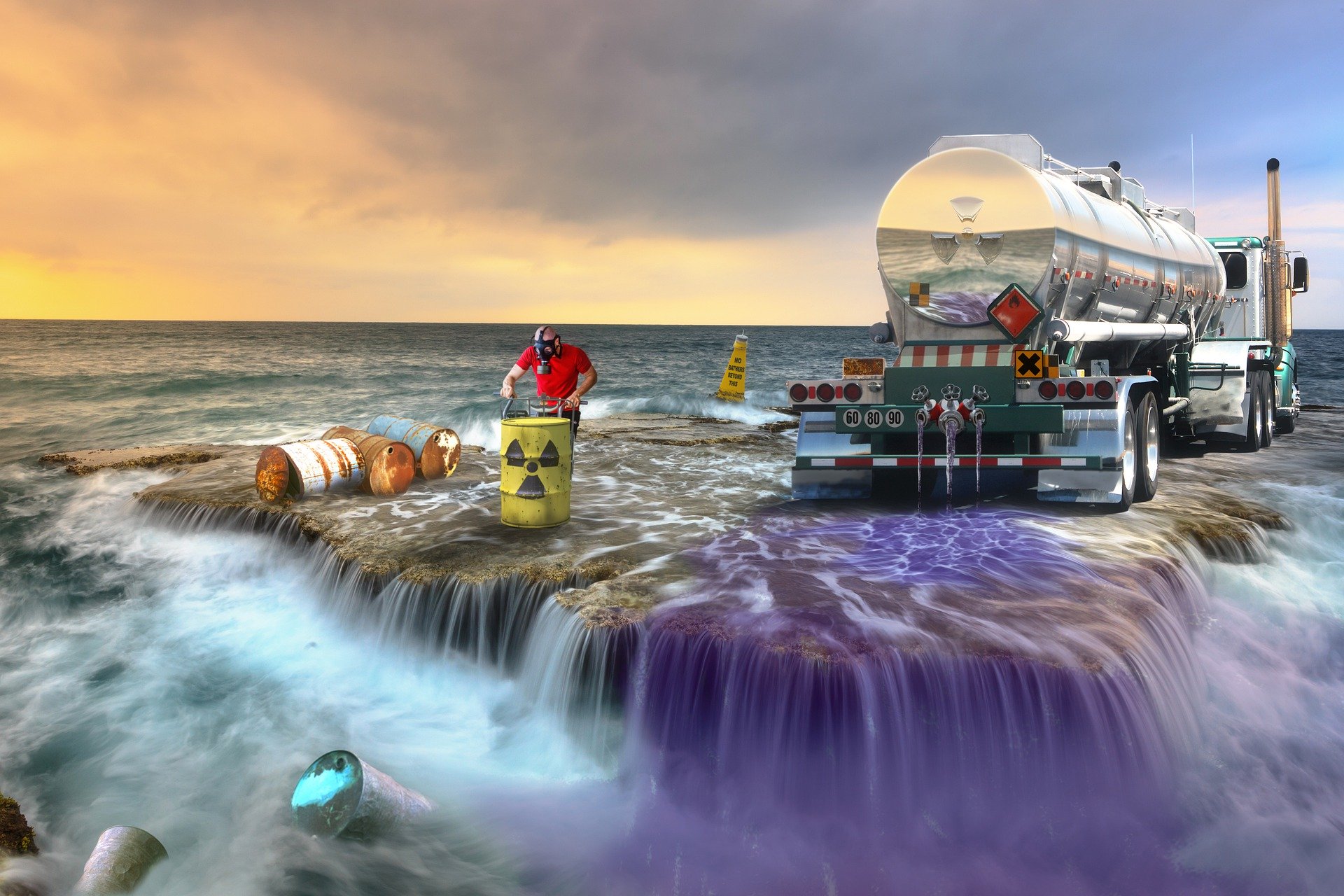In 1987, California adopted the Air Toxics “Hot Spots” Information and Assessment Act, responding to increasing concern over toxics in the air (AB 2588 (Connelly, Sterling)). This law complements California’s enforcement of national requirements governing stationary source emissions of air toxics. The federal Clean Air Act (CAA) required the U.S. Environmental Protection Agency (EPA) to establish and maintain a list of air toxics, named as Hazardous Air Pollutants (HAPs), and to set emissions standards (National Emissions Standards for Hazardous Air Pollutants (NESHAPs) for many HAP emission sources; California incorporates HAP/NESHAP requirements into the state’s Toxic Air Contaminant (TAC) / Airborne Toxic Control Measure (ATCM) program. (I discussed these requirements HERE).
Audit, Compliance and Risk Blog
Jon Elliott
Recent Posts
Tags: OSHA, CAA, Cal/OSHA, California, Air Toxics, NESHAPs, TAC, ATCM, Hot Spots Act, OEHHA, BAAQMD, HAPs, ARB
The federal Clean Air Act (CAA) requires the U.S. Environmental Protection Agency (EPA) to establish and maintain a list of air toxics, named as Hazardous Air Pollutants (HAPs), and to set emissions standards for many sources of such pollutants. HAPs include heavy metals, organics, and other airborne pollutants that are not otherwise regulated as “criteria” air pollutants (such as carbon monoxide, particulate matter, and ground level ozone). This note summarizes requirements applicable to stationary sources.
Read MoreAs Americans with Disabilities Act turns 30, it’s a good time to review accommodations
Posted by Jon Elliott on Tue, Sep 01, 2020
It’s been 30 years since President George H.W. Bush signed the Americans with Disabilities Act (ADA) into law. ADA does more than just add “persons with a disability” to the list of groups protected against discrimination by Title VII of the Civil Rights Act of 1964 (based on race, sex, etc.). It is designed not just to protect these individuals’ employment opportunities, but also to ensure their access to public services and accommodation. The ADA Amendments Act of 2008 repudiated several U.S. Supreme Court decisions that had interpreted ADA narrowly, and clarified related issues highlighted by rulemakings and litigation up to that time.
Read More
Tags: Business & Legal, Employee Rights, EEOC, DOJ, ADA, Disability
Summer is wildfire season in many areas, although its importance to your workplace obviously varies. We worry more here in California than folks in New England -- as I started this note my home region around San Francisco Bay had the worst air quality on the planet during a siege of wildfires from lightning strikes. If your workplace is a downtown high rise, wildfire risks are less than if it's in a suburban office park – and if you’re telecommuting during the COVID pandemic, it may depend less on your employer’s location than where you’ve set yourself up.
Read MoreTags: OSHA, Covid-19, workplace safety, Wildfire, Cal-Fire, California, Summer
The US Occupational Safety and Health Administration (OSHA) regulates thousands of chemicals, through regulatory standards directing employers to reduce worker exposures. For a small number of especially hazardous chemicals, OSHA provides a detailed standard applicable to a single chemical—examples include asbestos, benzene, and lead. Another single-chemical standard covers beryllium (29 CFR 1910.1024), which OSHA has revised effective September 14, 2020. OSHA describes the revisions as meant “to clarify certain provisions and simplify or improve compliance … to maintain or enhance worker protections overall by ensuring that the rule is well understood and compliance is more straightforward.” The agency notes that none of the changes impose new costs on employers, and some will reduce compliance costs.
Read MoreTags: Health & Safety, OSHA, chemical safety, Beryllium, Beryllium Standard
EPA revises ignitability characteristic of hazardous waste
Posted by Jon Elliott on Wed, Aug 12, 2020
National waste management laws and regulations provide management requirements to the perceived hazards of each category, under overall regulation by the Environmental Protection Agency (EPA). Effective September 8, 2020, EPA will make extensive technical revisions to its standards for the “ignitability characteristic”, so entities that generate or manage wastes that might be ignitable should now review those wastes and associated management requirements.
Read More
Tags: Environmental, EPA, Hazardous Waste, SWDA
Regional Greenhouse Gas Initiative prepares to add a new member
Posted by Jon Elliott on Wed, Aug 05, 2020
One of the longest running sub-national greenhouse gas (GHG) control efforts in the U.S. has been the Regional Greenhouse Gas Initiative (RGGI) program. RGGI provides a cap-and-trade program covering GHG emissions from targeted fossil fuel power plants in participating northeastern states. The program is preparing to add a new participating state in 2021 -- Virginia.
Read MoreTags: Environmental, Greenhouse Gas, ghg, RGGI, Fossil Fuel, CO2 Emissions
Supreme Court of Canada Reaffirms Insolvency Court Judge Discretion
Posted by Jon Elliott on Wed, Jul 29, 2020
If you’re a corporate director or officer, you might find your company and/or yourself in need of relief from unmanageable debts. One way to seek relief is through the Companies’ Creditors Insolvency Act (CCAA). CCAA permits a corporation to propose a formal compromise to its creditors, including the compromise of certain claims against the company’s directors. CCAA also allows a corporation to apply to the court in the province with its head office, seeking protection from creditors to allow a compromise to be negotiated. The court has very broad powers to “make any order that it considers appropriate in the circumstances”; in May 2020 the Supreme Court of Canada has just reaffirmed the breadth of that discretion (9354-9186 Québec inc. v. Callidus Capital Corp).1
Read MoreTags: Business & Legal, Business, Bankruptcy, BIA, CCAA, WRA
Supreme Court decision provides Superfund Responsible Parties with some relief
Posted by Jon Elliott on Mon, Jul 27, 2020
Forty years ago, the federal “Superfund” law -- Comprehensive Environmental Response, Compensation, and Liability Act of 1980 (CERCLA) – was enacted to provide legal requirements and procedural methodologies to speed identification and cleanup of contamination. Today, cleanups continue and the requirements and procedures continue to evolve. In April, the United States Supreme Court issued its latest decision interpreting a Superfund provision, this one defining clearer limitations on when the owners of contaminated land can force Responsible Parties for that contamination to pay for cleanup more extensive (and expensive) than cleanup ordered by the Environmental Protection Agency (EPA). The case is Atlantic Richfield Company v. Christian.
Read MoreTags: EPA, RCRA, clean water, Supreme Court, Superfund law, CERCLA, The Montana Supreme Court
Virginia adopts first standard specifically requiring workplace protections against COVID
Posted by Jon Elliott on Wed, Jul 22, 2020
In recent months, worker protection and public health agencies have issued increasingly stringent and detailed guidelines for employers to follow to reduce worker exposures to COVID-19. I’ve written about a number of these, including HERE and HERE. Over the same months, many workplaces have also been affected by state and local government mandates designed to protect public health in places the public (at least previously) frequent – these include temporary closures of many types of organizations, and restrictions such as masks at others.
Read MoreTags: Health & Safety, Coronavirus, CDC, Safety and Health at Work, Covid-19, VOSH, DOLI, PPE, Virginia










